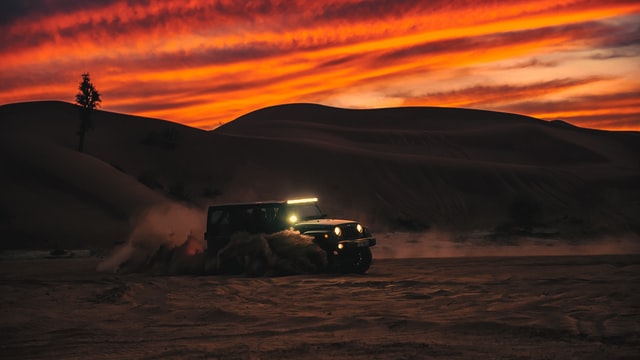How to Do a Burnout in a Jeep Wrangler

The process of keeping a vehicle stationary while spinning its wheels, causing the tires to heat up and smoke, is known as a burnout also known as a peel out or power brake. You will hear a chime and see the words ESP OFF if you hold the ESP button for 5 seconds, when it’s not turned off, only the small light of an automobile spinning out of control illuminates. Now it’s possible that you’ve done everything and the jeep still won’t turn around.
How do you do a burnout?
Off roaders have always liked demonstrating to tarmac-bound automobiles, particularly supercars, how large tyres allow you to enjoy a vehicle in a variety of ways. Of course, when asphalt is under their fat wheels, the go-fast type usually replies by demonstrating how restricted they are.
Can you burnout in an automatic?
In an automatic gearbox car, can I spin or burnout? Yes. Put the car in Drive, hold the foot brake, increase the revs, and then let go of the foot brake. Hold your foot on the brake while revving the engine in an automatic transmission.
How do you power brake burnout?
Although it is true that completing a brake torque burnout with a manual transmission is tough, this is still ludicrous. Clearly, he slammed on the brakes too hard, and the engine’s torque production couldn’t keep up with the rotor pressure.
How do you burnout in an automatic AWD?
1. Expect your car to be broken.
2. Firmly apply the brakes
3. To prevent shifting, put the transmission in the lowest gear possible.
4. Squeeze the gas pedal down gradually.
5. Let go of the brakes and floor the throttle pedal when the car starts to push through them.
6. Keep stomping on the gas pedal until the tyres spin.
7. Keep an eye on your surroundings because things aren’t going to stay steady for long.
Experiencing Burnout
Burnouts are a nightmare for any vehicle’s moving parts. Obviously, the tire’s life will be shortened. The differential, driveshaft, transmission, clutch, and engine are all working under abnormal conditions .Long burnouts keep the engine spinning at high rpms without moving the air that normally cools it. This can be very taxing on the cooling system as well.
What Makes You Want to Burnout?
Burnouts are, as you might expect, entertaining. They’re great for flaunting your skills, generating a commotion, or simply having fun. Drag Racing is a sport in which people compete against. To acquire the most grip possible, drag racers frequently “dust off” their tyres to eliminate rocks and debris. Competition tyres are constructed of rubber compounds that perform well in heated temperatures. As a result, drag racers wearing slick tyres will perform a lengthy burnout to ensure that the tyres warm up.
Safety
Burnouts are rarely harmful, but they’re also not without risk. Burnouts are associated with a number of risks. Make sure you’re belted in and the doors are shut if you’re going to do doughnuts or rolling burnouts. Falling out of an automobile as it spins erratically isn’t really cool.
The back of the car erupts in a torrent of debris. Rocks, garbage, and tyre fragments will all be strewn about. Even if the car is still, the wheels will be spinning at tremendous speeds. If the automobile starts to grip or lurch forward, it’s best to make sure nothing is in front of it. Furthermore, in the event of severe mechanical breakdown, portions of the driveline may attempt to flee the vehicle at a rapid rate.
Tires
Burnouts will be more difficult and costly with high-performance tyres. It will be simpler with older or harder compound tyres.
Reduced Friction
It’s not unusual to initiate a burnout with something slick. Burnouts are nothing more than overcoming the tire’s traction. Power vs. Grip is the only difference. You may make burnouts easier to start by adding water, car wash, or bleach to the initial grip.
History
They also remove any debris from the tyre and lay down a layer of rubber at the starting line to improve traction. Water is thrown onto a specific location to minimize friction and trigger the burnout at drag race circuits. Water, bleach, and resin were employed, with water claiming to be just as effective as bleach. The spectacular flame burnouts were first seen with the traction compound RFI.
The NHRA decided to regulate the use of water instead of flammable traction compound due to the risk of fire. Burnouts later evolved into their own significant form of sport and entertainment. Cars may be sponsored or purpose-built expressly as “burnout cars,” and there may be significant prize money or commodities involved. Burnout competitions are judged on the reaction of the crowd, therefore style and attitude are crucial considerations. These competitions are very popular in Australia, although they also happen frequently in North America. In casual street racing, burnouts are also prevalent, mainly for show. Burnouts on public property are banned in most nations, as are any street racing activities, though the severity of the penalties varies
Is it true that burnouts wreak havoc on your brakes?
If the burnout is only a few seconds long, a light application of the brakes is sufficient, as the engine torque will be sufficient to loosen the back wheels but not to override the front brakes.
Is it harmful to your vehicle to perform burnouts?
Burnouts are bad for your car because they put a lot of strain on the engine and cause it to overheat. Your engine, transmission, axles, clutch, differential, gearbox, and driveshaft will eventually be damaged as a result of this.
